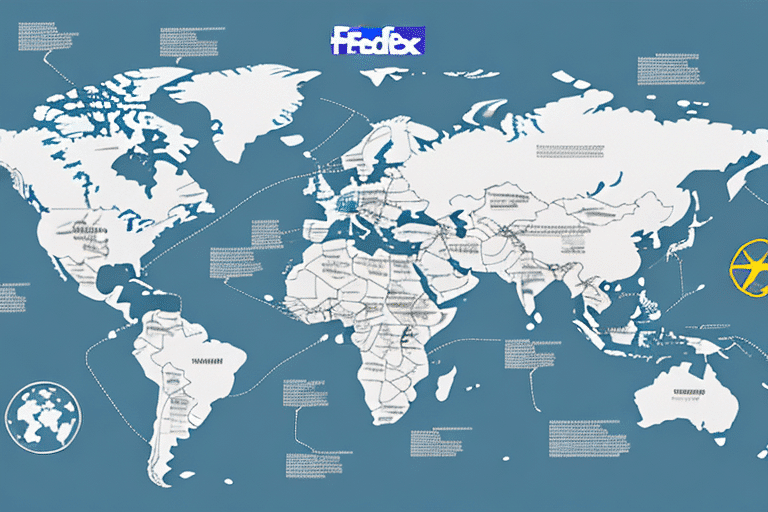Understanding International Shipping Regulations and Requirements
International shipping involves navigating a complex landscape of regulations and requirements to ensure your packages reach their destination smoothly. Familiarizing yourself with export controls, customs regulations, and import/export licensing is crucial. Non-compliance can lead to delays, fines, or even seizure of your shipments.
Each country has its unique set of rules. For instance, some nations impose restrictions on specific products like electronics or food items, while others may require detailed labeling or specific packaging standards. Conduct thorough research on the regulations of each destination country to avoid any disruptions in your shipping process.
Partnering with reputable shipping providers, such as FedEx, can help you stay compliant with international shipping laws and streamline the documentation process.
Mastering FedEx Ship Manager: Dashboard and Features
Overview of the FedEx Ship Manager Dashboard
The FedEx Ship Manager offers a user-friendly dashboard that simplifies the management and tracking of your international shipments. Key features include:
- Create and Manage Shipments: Easily create, edit, and manage your shipments from a centralized interface.
- Track Progress: Monitor your packages in real-time to stay updated on their status.
- Save Shipment Profiles: Store frequently used shipment information to expedite the shipping process.
Advanced Features for Efficient Shipping
FedEx Ship Manager also provides advanced tools such as:
- Shipment History: Access past shipment details, track statuses, and print shipping labels.
- Customizable Shipping Options: Set default carriers, delivery speeds, and preferred shipping methods.
- Integration Capabilities: Integrate with other business tools and platforms for seamless operations.
Preparing Your Shipment for International Delivery
Packaging Tips for Safe Transit
Proper packaging is vital to protect your items during transit. Consider the following:
- Use Durable Materials: Invest in high-quality boxes, envelopes, or tubes suitable for your items.
- Cushioning: Utilize bubble wrap, foam, or packing peanuts to safeguard fragile items.
- Sealing: Ensure all packages are securely sealed to prevent damage or loss during shipping.
Labeling and Documentation
Accurate labeling and thorough documentation are essential for international shipments:
- Clear Labels: Include complete addresses, contact information, and handling instructions.
- Customs Documentation: Prepare necessary forms such as commercial invoices, certificates of origin, and any required export licenses.
Calculating and Managing Shipping Costs
Factors Affecting Shipping Costs
Several elements influence the cost of international shipping:
- Weight and Dimensions: Heavier and larger packages typically incur higher fees.
- Shipping Distance: The farther the destination, the more expensive the shipment.
- Delivery Speed: Faster delivery options come at a premium.
- Customs Fees: Destination countries may impose additional taxes or duties.
Strategies to Reduce Shipping Expenses
Implementing cost-saving measures can significantly lower your international shipping expenses:
- Use Shipping Consolidators: Combining multiple shipments can reduce overall costs.
- Negotiate Rates: Engage with FedEx or other carriers to secure discounted shipping rates.
- Optimize Packaging: Use appropriately sized packaging to avoid unnecessary weight and dimensional fees.
Tracking and Managing Your Shipments
Real-Time Tracking Capabilities
FedEx Ship Manager offers robust tracking features that allow you to:
- Monitor Shipment Status: Receive real-time updates on the location and status of your packages.
- Set Up Alerts: Get notifications for important events such as departure, arrival, and delivery confirmations.
- Access Shipment History: Review past shipments for reference and record-keeping.
Managing Multiple Shipments
For businesses handling numerous shipments, FedEx Ship Manager provides tools to:
- Create Shipment Profiles: Save recipient addresses and package details for quick access.
- Batch Processing: Handle multiple shipments simultaneously to enhance efficiency.
- Automate Communications: Keep customers informed with automated tracking updates and delivery notifications.
Dealing with Common Shipping Issues
Resolving Shipping Errors
Occasionally, shipments may encounter errors such as incorrect addresses or documentation issues. To address these:
- Verify Information: Double-check all shipment details before dispatch.
- Contact FedEx Support: Reach out to customer service for assistance in correcting errors.
Handling Customs Delays
CUSTOMS delays can stem from incomplete documentation or prohibited items. To minimize these issues:
- Ensure Accurate Documentation: Provide all required forms and information.
- Understand Prohibited Items: Familiarize yourself with restricted products in the destination country.
- Follow Up: Regularly check the status of your shipment and promptly address any inquiries from customs authorities.
The Future of International Shipping: Trends and Predictions
The international shipping landscape is continually evolving, influenced by advancements in technology and shifting market demands. Key trends to watch include:
- Increased E-Commerce Growth: The surge in online shopping drives demand for faster and more efficient shipping solutions.
- Adoption of AI and Automation: Artificial intelligence is enhancing logistics through predictive analytics and automated sorting systems.
- Sustainable Shipping Practices: Environmental concerns are pushing carriers to adopt greener shipping methods and reduce their carbon footprint.
- Drone and Autonomous Delivery: Emerging technologies promise faster delivery times and reduced operational costs.
Staying informed about these trends will help you adapt your shipping strategies and maintain a competitive edge in the global market.
Best Practices for Customer Service in International Shipping
Providing exceptional customer service is crucial for maintaining customer satisfaction and loyalty, especially in the realm of international shipping. Implement the following best practices:
- Timely Communication: Keep customers informed about their shipment status with regular updates and notifications.
- Accurate Tracking Information: Ensure that tracking details are precise and easily accessible to customers.
- Responsive Support: Offer prompt assistance through multiple channels such as phone, email, and live chat to address customer inquiries and issues.
- Transparent Policies: Clearly communicate your shipping policies, including delivery times, return procedures, and handling of lost or damaged packages.
By prioritizing customer service, you enhance the overall shipping experience, fostering trust and encouraging repeat business.
How to Save Money on Your International Shipping Costs
Reducing international shipping expenses without compromising quality or speed is achievable through strategic planning and smart choices. Consider the following strategies:
- Consolidate Shipments: Combine multiple orders into a single shipment to take advantage of bulk shipping discounts.
- Negotiate with Carriers: Engage in rate negotiations with carriers like FedEx to secure better pricing based on your shipping volume.
- Optimize Packaging: Use the smallest possible packaging to reduce dimensional weight charges, and select materials that provide adequate protection without adding unnecessary bulk.
- Choose Cost-Effective Shipping Methods: Balance delivery speed with cost by selecting shipping options that meet your budget and timeline requirements.
- Automate Shipping Processes: Utilize shipping software to streamline operations, reduce errors, and identify cost-saving opportunities.
Tips for Faster and More Efficient International Shipping with FedEx Ship Manager
Enhancing the speed and efficiency of your international shipping process can lead to significant improvements in customer satisfaction and operational costs. Follow these tips:
- Understand Destination Regulations: Thoroughly research customs requirements and product restrictions for your target countries to prevent delays.
- Leverage Advanced Tracking: Utilize FedEx's real-time tracking features to monitor shipments and proactively address any issues that arise.
- Customize Delivery Preferences: Take advantage of FedEx's delivery options to offer customers flexible delivery times and locations, enhancing their experience.
- Streamline Documentation: Use automated tools within FedEx Ship Manager to generate and manage necessary shipping documents, reducing manual errors and saving time.
- Regularly Review Shipping Processes: Continuously assess and refine your shipping workflows to identify areas for improvement and implement best practices.




















